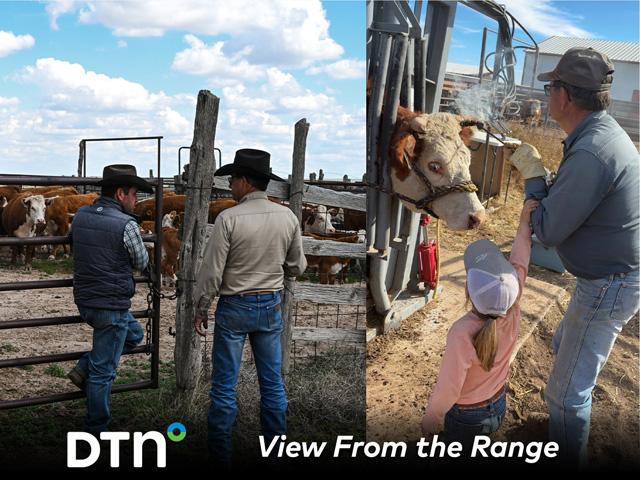Vilsack: DOJ Should Examine High Prices
Seeking CEO's Comments, Ag Secretary Questions if Some Input Price Hikes are Justified
ARLINGTON, Va. (DTN) -- U.S. Agriculture Secretary Tom Vilsack wants the Justice Department to determine whether some input price hikes are "absolutely justified" or if companies are taking advantage of supply chain disruptions to unfairly raise input prices on farmers.
Speaking Wednesday to state agriculture officials at the National Association of Departments of Agriculture (NASDA) winter policy meeting, Vilsack was asked what USDA was doing about supply chain problems and high input prices. The secretary talked about expanding markets, looking at efficiency and technology such as precision agriculture to manage inputs and research tools to develop more efficient fertilizers.
"And then -- and I think it's fair to say I've been asked this question, and we are asking it of the Justice Department -- are all of these increases absolutely justified?" Vilsack said.
The secretary talked about an article this week in the Wall Street Journal focusing on high input prices for farmers. Vilsack said a seed company executive was asked about supply chain issues and responded that the company could handle any change of flow with the supply chains and would raise prices to compensate, "and then he added this phrase: 'and then some,'" Vilsack said. "Farmers don't need, 'and then some,' right? So, I think it's important to ask these questions whether all of these increases, every penny of these increases, is justified based on a disruption, based on supply, based on the normal economics of it."
Vilsack added, "And if they are not, then shame on anybody who is trying to take advantage of the circumstance. So those are questions that I would say there's a lot we can do something about."
A short time later, Vilsack told reporters the Justice Department should be asking questions about the basis for price hikes.
"We need to make sure these prices that are being paid -- these phenomenal price increases that we're seeing -- that every bit of it is justified by the market as opposed to 'and then some.'" Vilsack said. "What's that all about? 'And then some.' What does that mean?"
The Wall Street Journal on Tuesday had an article looking at higher input prices for farmers. The article cited that Corteva had increased seed prices "10% in its most recent quarter, and its crop-protection products were up 6% compared with the prior year to offset inflation." The article quoted Corteva CEO Chuck Magro saying, "We've demonstrated that we can move prices to cover costs and grow margins."
A USDA spokesperson confirmed to DTN that was the article that had grabbed Vilsack's attention.
P[L1] D[0x0] M[300x250] OOP[F] ADUNIT[] T[]
Magro's comment in the WSJ piece came from Corteva's quarterly earnings teleconference call earlier this month.
A spokesperson for Corteva declined to comment to DTN directly on Vilsack's earlier statements. In an email, the spokesperson stated: "(Corteva) has executed a price for value strategy that reflects the value created by our industry-leading product portfolio, in an inflationary ag environment and amidst widespread supply challenges. Our globally diverse and balanced portfolio includes technologies focused on maximizing yield and productivity for farmers and includes new and differentiated solutions that address timely agriculture challenges, while prioritizing sustainable outcomes."
Prices for products beyond seed continue to rise. DTN's Retail Fertilizer Trends column notes this week that average retail fertilizer prices are still climbing. The rate of growth has slowed, but that's due to the sustained length of the upward trend.
"Fertilizer prices have now been higher for a full calendar year, so the percentages higher are not as great as they had been," DTN Staff Reporter Russ Quinn wrote in this week's column. (https://www.dtnpf.com/…)
Addressing other price factors in his talk to NASDA members, Vilsack also pointed to the "pent-up demand" from consumers and the rebound of the global economy last year that the "supply chain wasn't quite prepared for" as one of the key drivers for overall inflation hitting 7.5% over the past year. The secretary said higher inflation reflects a surge in economic growth.
"So, what's the alternative? Would we have preferred to have no growth?" he asked.
Vilsack also pointed to price hikes facing producers in part because of export controls by some countries on key products. The secretary said the administration is opposed to export controls, but some of these factors are not areas where the Department of Agriculture is able to provide much assistance.
"We can continue to create market opportunities and continue to create the kind of market that supports high prices that farmers are currently getting," Vilsack said. "Because, at the end of the day, you would love to have high prices and low input costs. But if you can't have that, at least you want the high prices so that farmers have at least a little bit of wherewithal to be able to withstand some of these shocking prices that they are facing."
He said USDA would "continue to promote export growth" in the wake of a record $177 billion in 2021. (https://www.dtnpf.com/…)
The secretary will leave later this week to join a USDA delegation in Dubai, United Arab Emirates, for a trade mission.
Along with these price challenges, Vilsack said USDA is asking whether the country has sufficient capacity domestically to produce some needed inputs.
"And if we don't, maybe that is something we need to be thinking about doing something about just as we did with processors," Vilsack said.
Vilsack wrapped up his talk to agricultural directors by calling on them, notwithstanding any challenges agriculture is facing today, to be hopeful for the future of farming.
"That can get people through a lot of difficult and challenging times, if we've got a positive message that, 'Yeah, we understand there are problems, and here's what we're trying to do, and here's the process we're going through. We're trying.' That's really important and you all have the same opportunity in your states to convey that same kind of message."
For more reporting from the NASDA meeting, see "Ag Adviser to EPA Speaks on Dicamba, Enlist and Endangered Species," https://www.dtnpf.com/…
"APHIS: Tighten Biosecurity Measures to Reduce Possible Highly Pathogenic Bird Flu Spread," https://www.dtnpf.com/…
Video interview with Richard Ball, agricultural commissioner for New York and current NASDA president:
Chris Clayton can be reached at Chris.Clayton@dtn.com
Follow him on Twitter @ChrisClaytonDTN
(c) Copyright 2022 DTN, LLC. All rights reserved.



